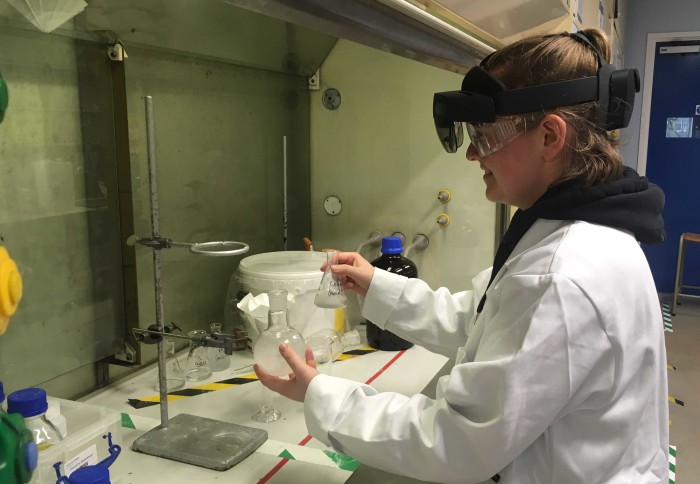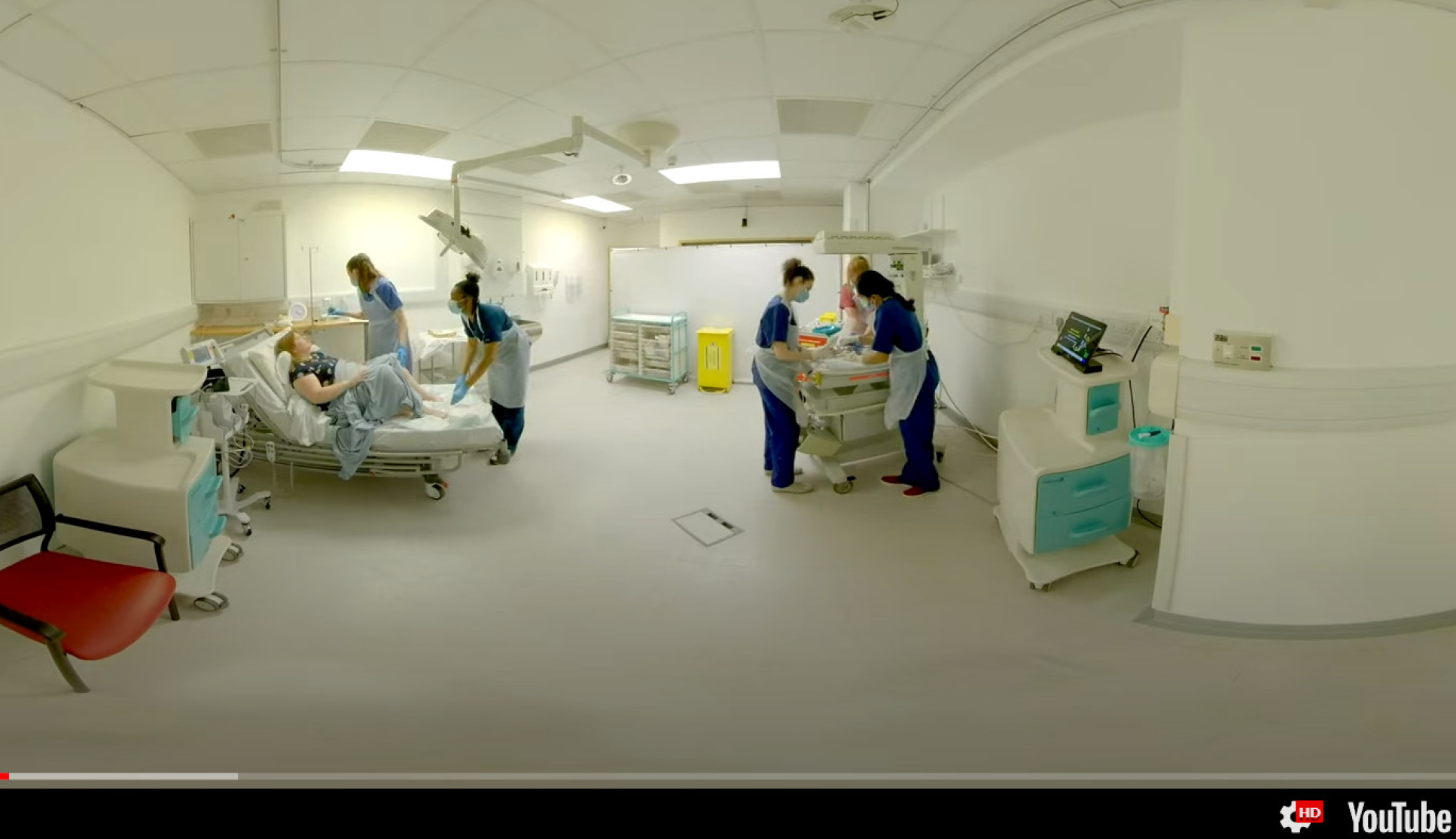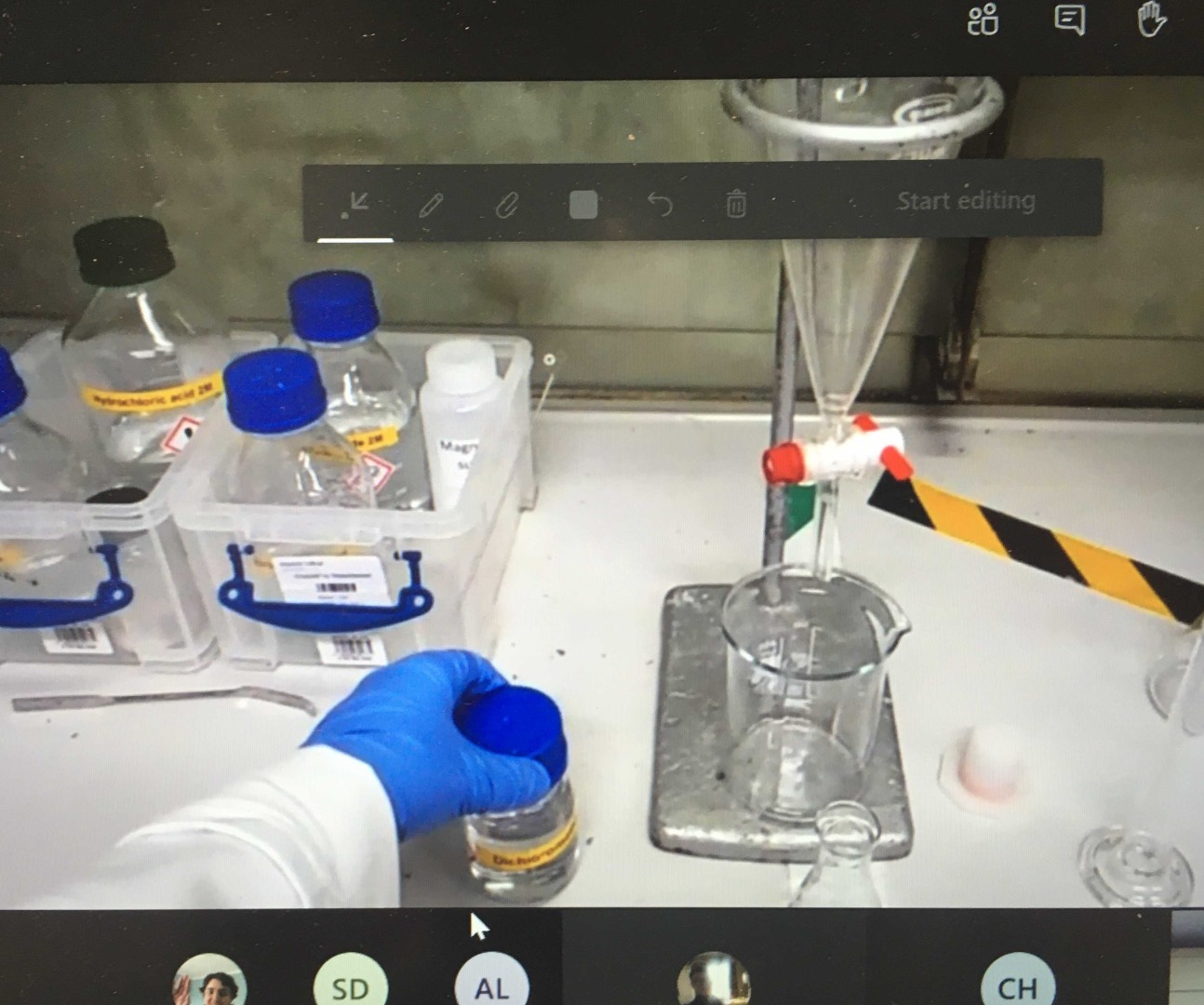Innovative use of XR in Imperial teaching profiled during Education Week
by Sarah Saxton

Education Week explores the use of XR in teaching, looking at the innovations, surprises and benefits of the technology as well as its challenges.
XR, or mixed reality, is a way of describing all technologies that bring the digital world with the real world together. These include augmented reality (AR) where you can overlay digital information onto the real world, and virtual reality (VR) where you are completely immersed in a digital space and don’t see the real world.
Thomas Hurkxkens, New Media and Innovation Lead at the Digital Learning Hub said: “In virtual reality, even though you know 100% that it isn’t real you respond as if it is real. This response to XR technologies means that we can develop innovative teaching methods building on this experience of ‘presence’ for our student community. For students studying medical courses there is the added benefit that virtual reality and augmented reality simulations provide an environment where they can practice and make mistakes without the real-world consequences. It is a safe way of building expertise and confidence.”
Thinking, feeling, doing AND learning
What makes designing for XR technology particularly interesting is that it is not enough to just think about the theory that students are learning. Thomas Hurkxkens explains: “When we design virtual reality experiences we map  out the experience step by step together with educators. We are not only thinking of what a student does at each stage, but also what they are thinking and feeling. Virtual reality can trigger a powerful response that we can leverage for learning, but that we should also treat with care, for example when we take students into a virtual emergency scenario in medical education. We need to think about what emotions have been generated during the teaching. It is exciting to be developing teaching in this way – but thorough learning design is key to a good learning experience.”
out the experience step by step together with educators. We are not only thinking of what a student does at each stage, but also what they are thinking and feeling. Virtual reality can trigger a powerful response that we can leverage for learning, but that we should also treat with care, for example when we take students into a virtual emergency scenario in medical education. We need to think about what emotions have been generated during the teaching. It is exciting to be developing teaching in this way – but thorough learning design is key to a good learning experience.”
Experiencing new environments
The Digital Learning Hub has partnered with Dr Deena-Shefali Patel, a Consultant Neonatologist and lead for the MSc Programme in Paediatrics and Child Heath, to produce a 360-degree video that immerses students in an emergency scenario on the labour ward.
The video has been produced for use by postgraduates and medical students as well as those already working in paediatrics such as junior doctors and senior nurses. They will be immersed in a simulated resuscitation of a premature baby. Future planned expansions for the 360-degree experience include scenes that focus on difficult communication scenarios before and after the emergency.
 Dr Deena-Shefali Patel explains: “We have designed this training experience for students and medical professionals to learn more about decision making in a stressful environment, how to talk to patients’ families and the communication aspects of teamwork and leadership. We hope that the immersive experience will replicate many aspects of a real emergency, including eliciting an emotional response in viewers that will help them to be better prepared when they deal with a real-life situation. The experience can then be reviewed to discuss ethical questions, debate the latest evidence for management strategy and how this may change the actions in such an emergency. By creating a simulation that can be viewed by an entire cohort of students or practicing professionals we also expect that it will be easier to reflect on differences across the global community and develop shared learning.”
Dr Deena-Shefali Patel explains: “We have designed this training experience for students and medical professionals to learn more about decision making in a stressful environment, how to talk to patients’ families and the communication aspects of teamwork and leadership. We hope that the immersive experience will replicate many aspects of a real emergency, including eliciting an emotional response in viewers that will help them to be better prepared when they deal with a real-life situation. The experience can then be reviewed to discuss ethical questions, debate the latest evidence for management strategy and how this may change the actions in such an emergency. By creating a simulation that can be viewed by an entire cohort of students or practicing professionals we also expect that it will be easier to reflect on differences across the global community and develop shared learning.”
Post-graduate skills training
For trainee radiologists, developing the skills needed for interventional radiology procedures requires significant practice. Usually, exposure to these complex procedures and the amount of practice that each trainee gets is dependent upon the patient cases that come through when each trainee is on rotation.
Professor Mohamad Hamady, Consultant Interventional Radiologist, and Dr Dimitri Amiras, Consultant Musculoskeletal Radiologist, worked with the Digital Learning Hub to develop an AR training tool using a HoloLens that enables trainee radiologists to learn how to do CT-guided procedures. The tool enables trainees to practice the technique multiple times allowing them to gain confidence in doing the procedure before they move on to harder techniques included in the software.
Professor Hamady said: “The augmented reality CT biopsy tool was initially developed as a response to the pandemic when our trainees’ time on the interventional radiology suites was significantly affected. We have been using it in training settings for over a year now and the exceptional benefits that it brings to radiology trainees mean that we will be using it far into the future. Trainees have told us in their feedback and shown us in their improved professional practice that XR certainly has a place in the medical curriculum.”
Remote laboratory
When the COVID-19 pandemic prevented students from accessing labs, Dr Laura Patel, Principal Teaching Fellow from the Department of Chemistry worked with the Faculty of Natural Sciences Edtech team and the Digital Learning Hub to create an augmented reality lab experience.
 Wearing a HoloLens, students were able to see through the eyes of a lab assistant who was the only person in the lab. This allowed them to lead the experiments from home by interacting with and instruct the lab assistant as they moved apparatus, collected materials, or used instruments.
Wearing a HoloLens, students were able to see through the eyes of a lab assistant who was the only person in the lab. This allowed them to lead the experiments from home by interacting with and instruct the lab assistant as they moved apparatus, collected materials, or used instruments.
Using the Hololens also had additional benefits as it enabled students to zoom in to the molecular scale to see what is happening during a technical process. Student feedback was very positive, with the majority reporting increased confidence in carrying out the practical elements of the class.
Opportunities and challenges
Thomas Hurkxkens said: “Every day we are learning more about the benefits that XR technologies can bring to the higher education sector. From enabling new perspectives in the classroom, to creating a more equal learning experience I have no doubt that Imperial will continue to generate innovative and exciting ways for students to learn.”
As with many new technologies there are challenges to overcome. Content creation for XR technology can be expensive. Equipment like smart glasses date quickly as updated models are released. Protocols need to be developed for use of XR in the classroom but also for example to ensure that patient data is protected with the same safeguards as for other teaching methods.
Immersive Technology Initiative
In order to bring together the innovative academic community and student community around XR technologies the Digital Learning Hub has started the Immersive Technology Initiative.
The Immersive Technology Initiative is a network of staff, students from across Imperial alongside global partners who are using XR technologies in education and research. The aim of this initiative is to drive innovations in XR for education, training and research by facilitating innovative technology developments and disseminating research and educational excellence.
To join the network, please contact: Adrian Cowell (a.cowell@imperial.ac.uk) or Thomas Hurkxkens (t.hurkxkens@imperial.ac.uk).
Read more
Article text (excluding photos or graphics) © Imperial College London.
Photos and graphics subject to third party copyright used with permission or © Imperial College London.
Reporter
Sarah Saxton
Communications Division
